One advantage of staying where we are for such a long time is the opportunity to establish some long-term relationships with the birds, not just take their photos and move on. Our location, near the little village of Las Lajas, is semi-rural, with properties ranging from one to several acres, and many big trees and flowering plants. On our own little finca (farm) of La Suerte (Lucky), we have numerous nests and long-term avian residents as well as frequent visitors. Below are some of our friends.
Great Kiskadees: Our most prominent family, because of their proximity and noise level, are the Great Kiskadees, whose nest is less than 20 meters from our front door. They are very vocal. They believe the swimming pool is their bird bath. They are terrible neighbors with the Tropical Kingbirds and Social Flycatchers who have nests in the same tree, as they are always chasing them around, squawking at them and at each other, and making nuisances of themselves. We are thoroughly enjoying watching the youngsters learn how to sit on a wire, how to dunk in the pool, and how to deal with the people and birds who invade their space.
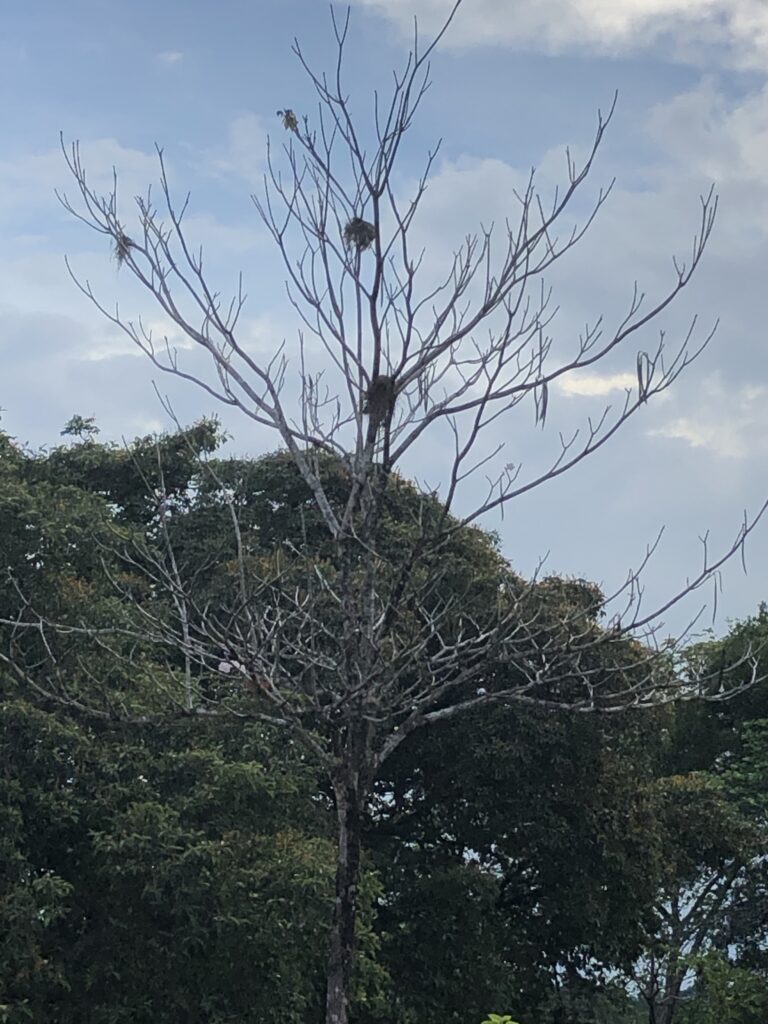
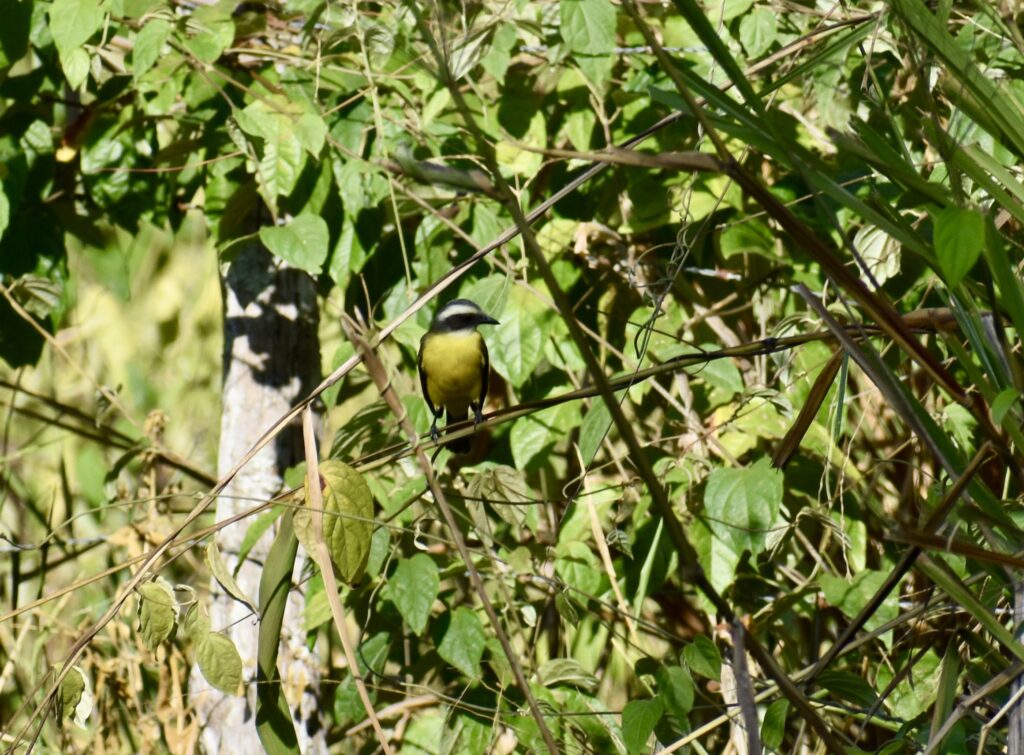
Tropical Kingbirds: Because they nest in the same tree, the Tropical Kingbirds get next billing. These folks are not as spectacular as their neighbors. Their yellow breasts are not as vibrant, their calls are faint, and they meekly fly away when they get chased. They always come back, though, and quietly tend to their little nest, which is “upstairs” from the Great Kiskadees.
Social Flycatchers: The “downstairs” neighbors of the Great Kiskadees are the pretty little Social Flycatchers, who look almost like miniature versions of the kiskadees. They don’t get the same bullying that the Tropical Kingbirds face, perhaps because they don’t spend as much time in and round the tree.
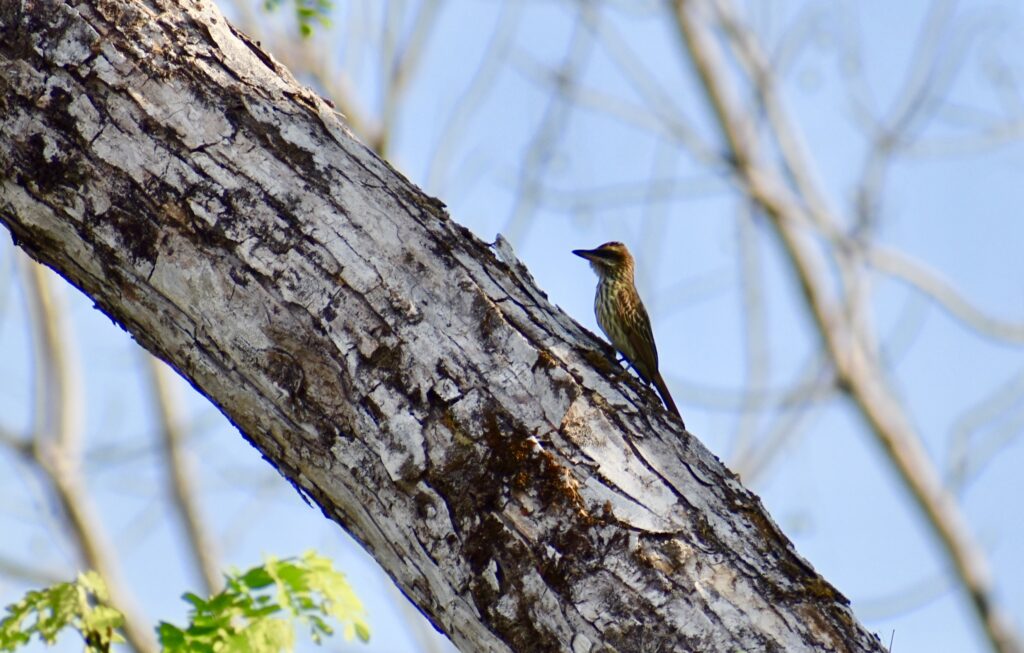
Blue-Gray Tanagers: These beauties are my favorite bird, at least so far. Their colors are so pretty, and they sing so nicely. When they fly across the yard, it’s like watching a blue streak pass before your eyes. A pair—and you always find Blue-Gray Tanagers in pairs—had a nest in a palm just off the portal. Baby has grown up while we’ve been here, and they aren’t tending the nest anymore, but it was fun to watch while we could.

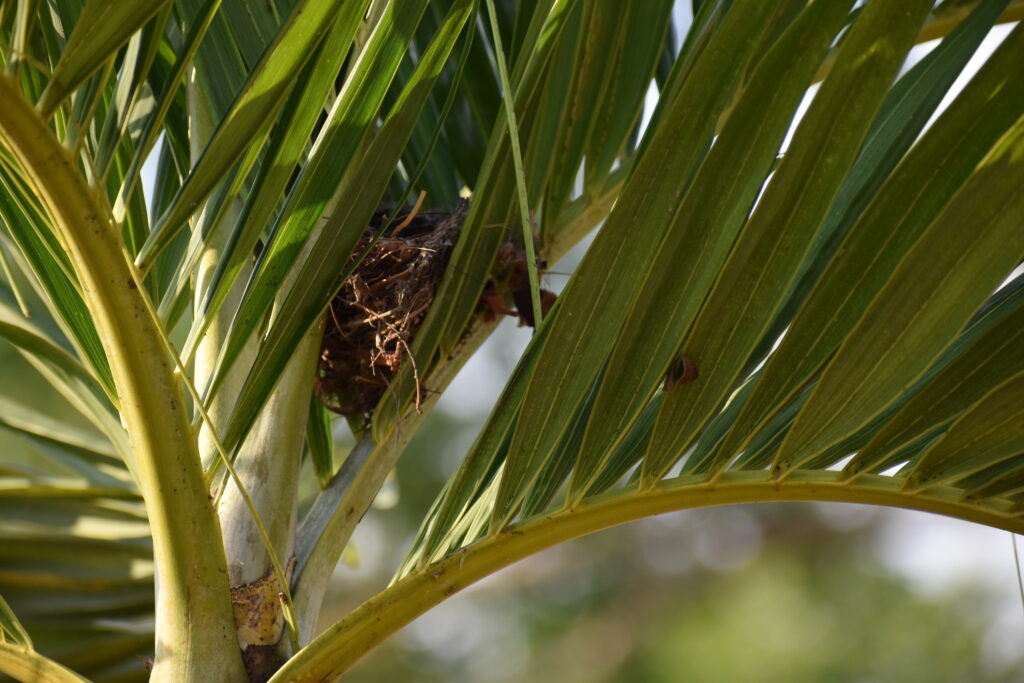
Chubby, the Rufous-Tailed Hummingbird: This little guy rules the portal. When not drinking from the hibiscus and purple flowers, he sits on the top of the cactus, ready at a moment’s notice to chase away any hummingbird intruders—and sometimes the butterflies. We gave him a name since we see him every morning, and, yes, I do talk to him and call him by name.
Veronica, the Black-Throated Mango: If Chubby rules the portal, Veronica rules the tree out the kitchen window. She guards it ferociously from other hummingbirds, although she doesn’t mess with the parakeets that bite and then discard the red flowers. Her name starts with a V because of the white V on her chest, and it just seems to fit. I’m holding out hope to see her partner, as male Black-Throated Mangos are one of the most beautiful of hummingbirds. No luck yet, though.
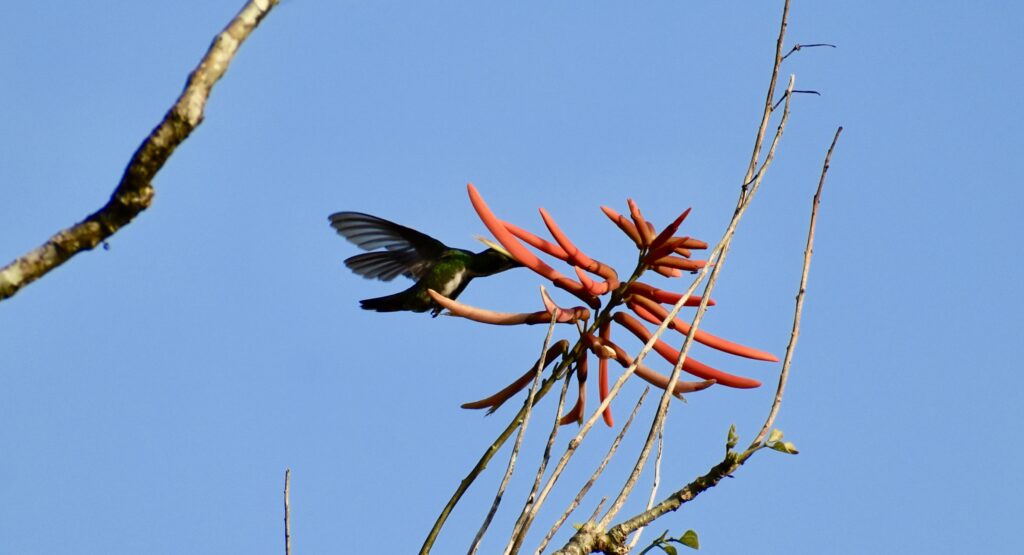
Red-Legged Honey Creepers: When we first arrived, this family was still together, a blue papa, a yellow mama, and a yellow baby (either female or still immature). After a couple of weeks, though, baby seems to have flown on, and just the adults still frequent the trees in the evening. A small nest I found in the yard probably belonged to them but was no longer needed by the time we met.
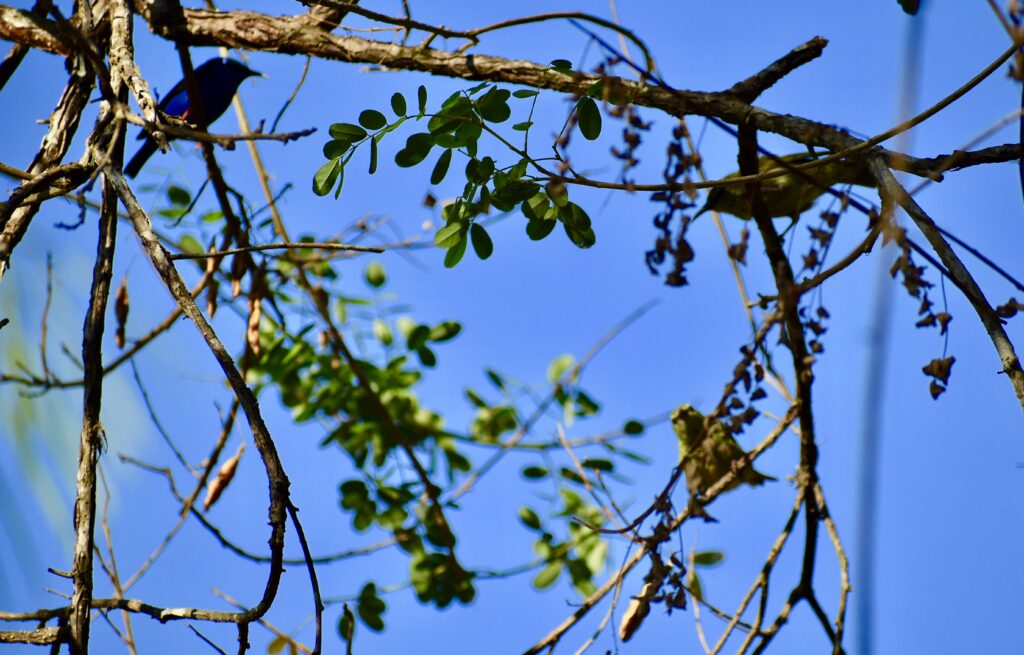
Red-crowned Woodpeckers: There are either two very busy red-crowned woodpeckers in the yard or six, one pair in each of three different trees (which is what I suspect). They fly around all over the yard, knock on wood at any time of day, and laugh often, as all woodpeckers do.
Clay colored thrushes: These guys have the prettiest song in the yard, very similar to a robin, to which they are closely related. I’m not sure if they are nesting, but they are usually found in the tree by the driveway, singing away.
Ruddy Ground Doves: This pair probably lives on the other side of the street because I see the two of them flying back and forth across it a lot. (Why did the dove cross the road?) However, they spend a lot of time in “our” yard, so we count them as one of our families. They are such sweet little birds. Their call sounds nothing like a regular dove. It’s more of a peep.
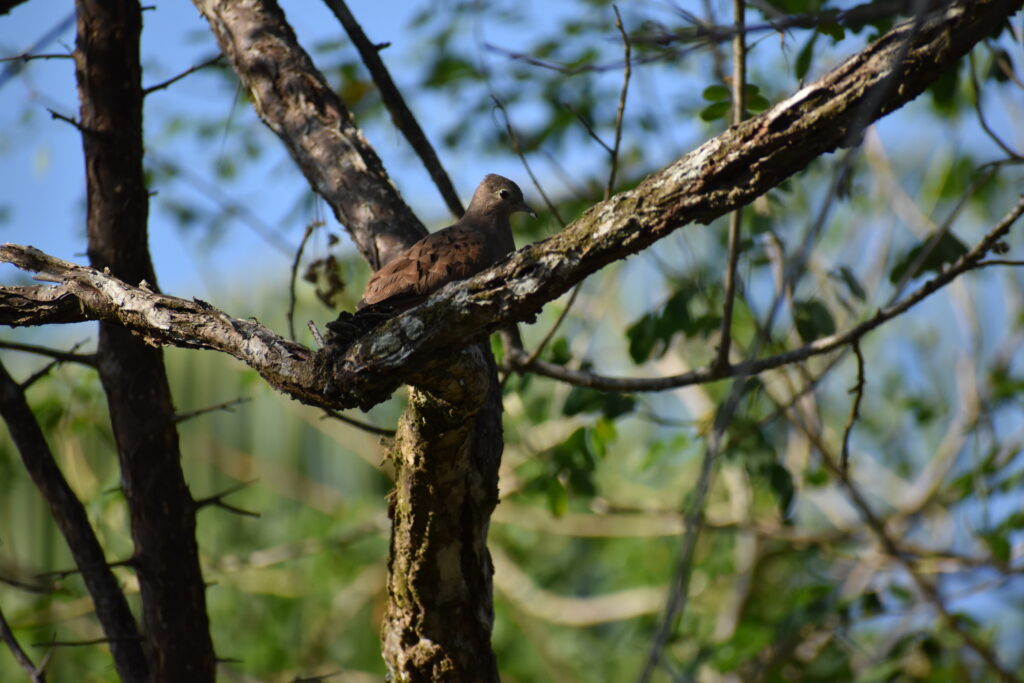
House Wrens: These vociferous little folks believe they rule the yard—just ask them, and they will respond in a loud voice. They are active in trees, in bushes, on the fence, and on the ground. They frequent all sections of the yard, don’t mind stormy weather, and don’t pay much attention to other birds, dogs, or that crazy lady who wanders around the yard with her camera.
Common-Tody Flycatcher: This tiny guy is great at hiding, so it’s a real privilege when he comes out for an evening visit in one of the trees near the portal. I don’t know where his partner is or if he even has one, but we see or hear him several evenings each week, so he counts as a resident.
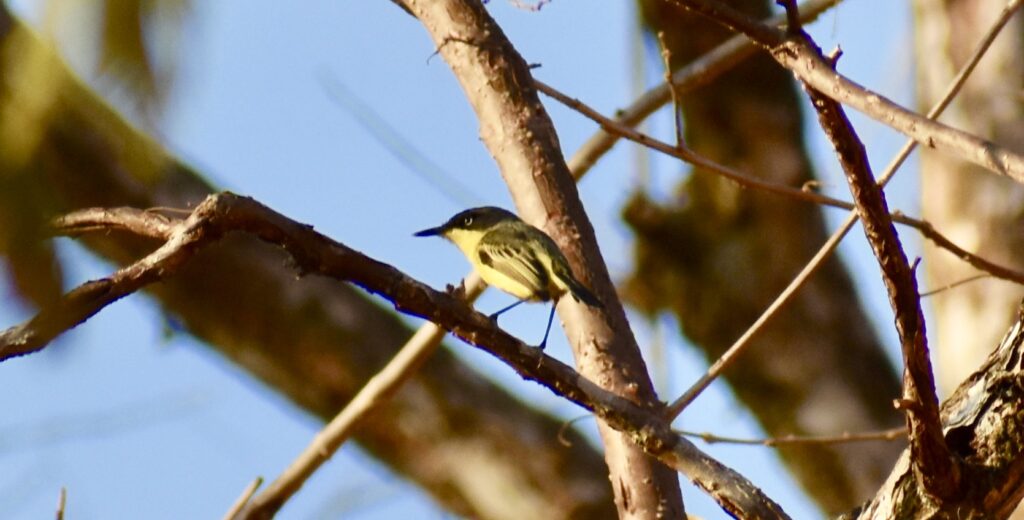
Turkey and Black Vultures: I can’t say that any of these guys actually live on the farm, and apparently I haven’t taken any photos of them, either. However, every day, they circle above us. We wave at them occasionally so they know we are not dead.
When I started this post, my intention was to write about both residents and visitors, but the finca has more residents than I realized! We’ll save the visitors for another time because I have some fabulous photos. For now, I’m headed outside to see what that peeping sound is.

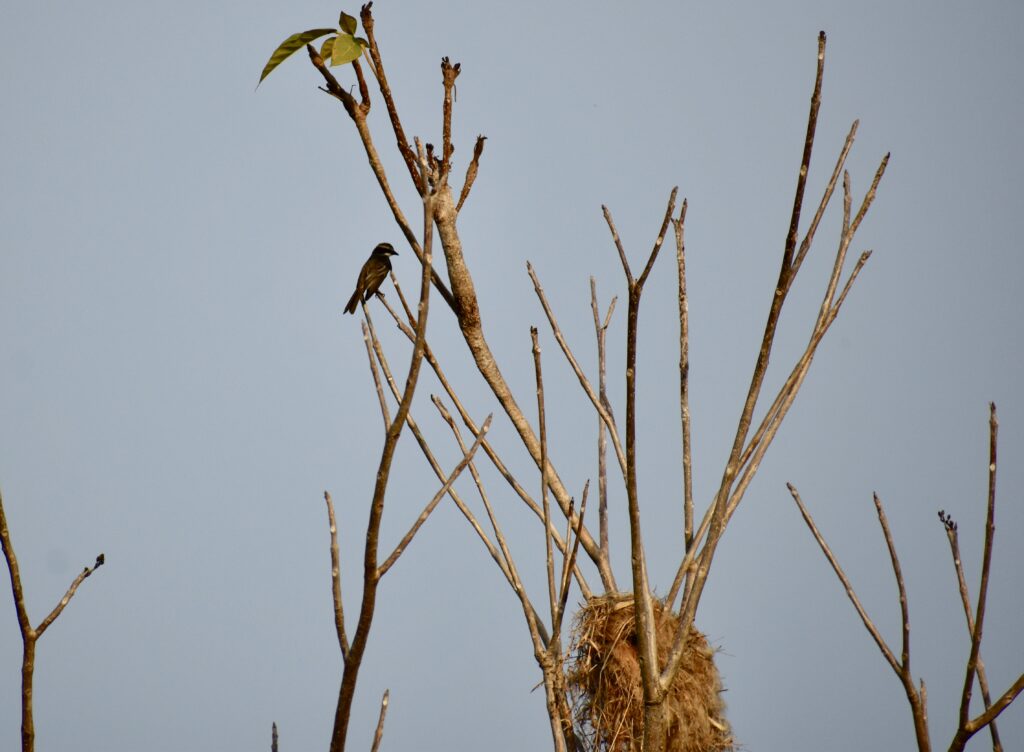
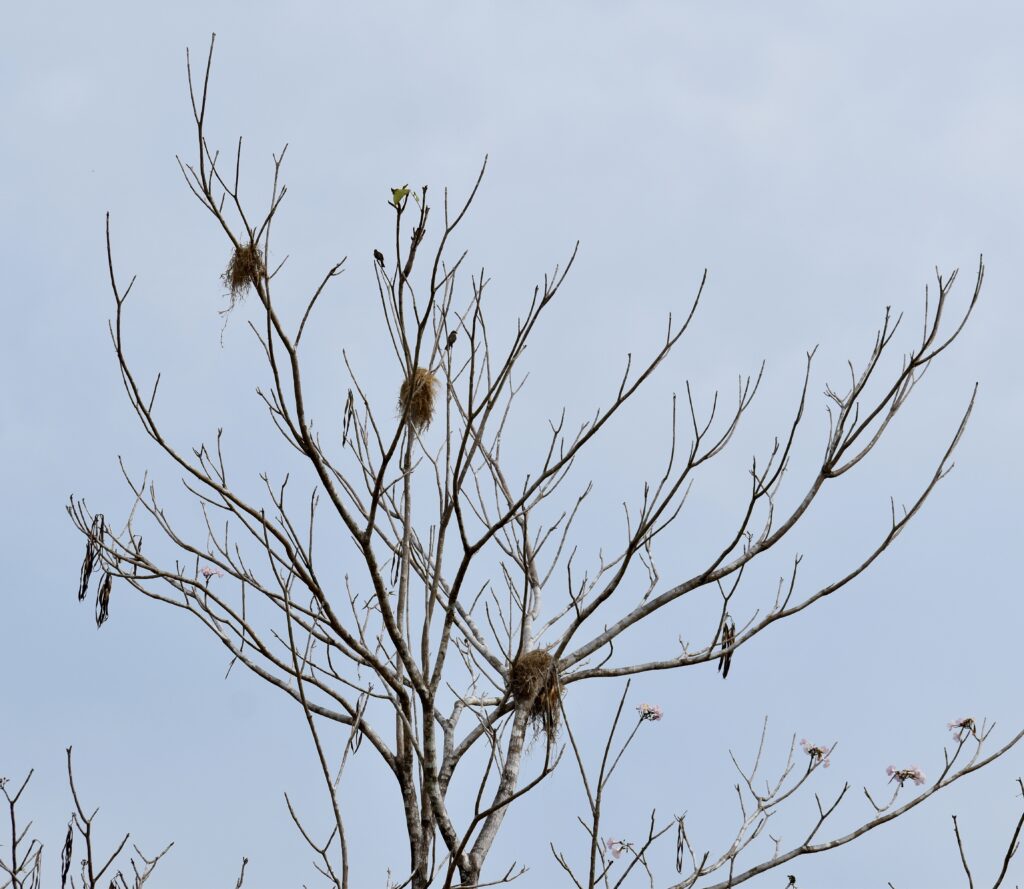
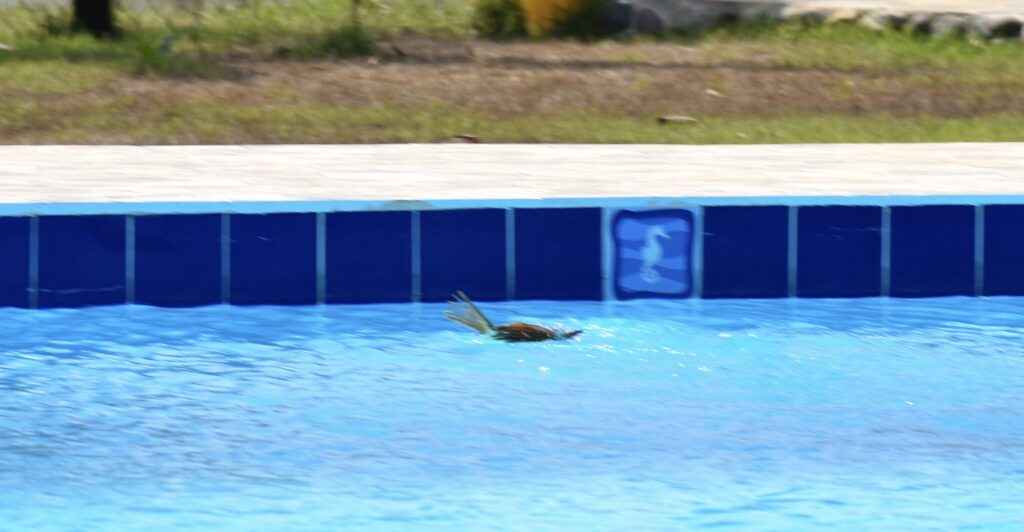
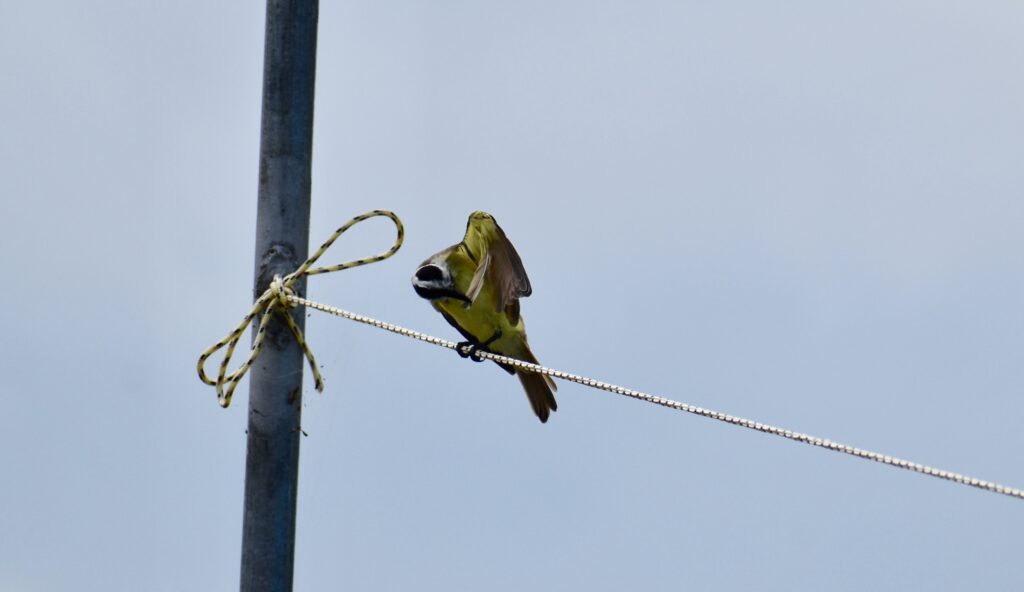

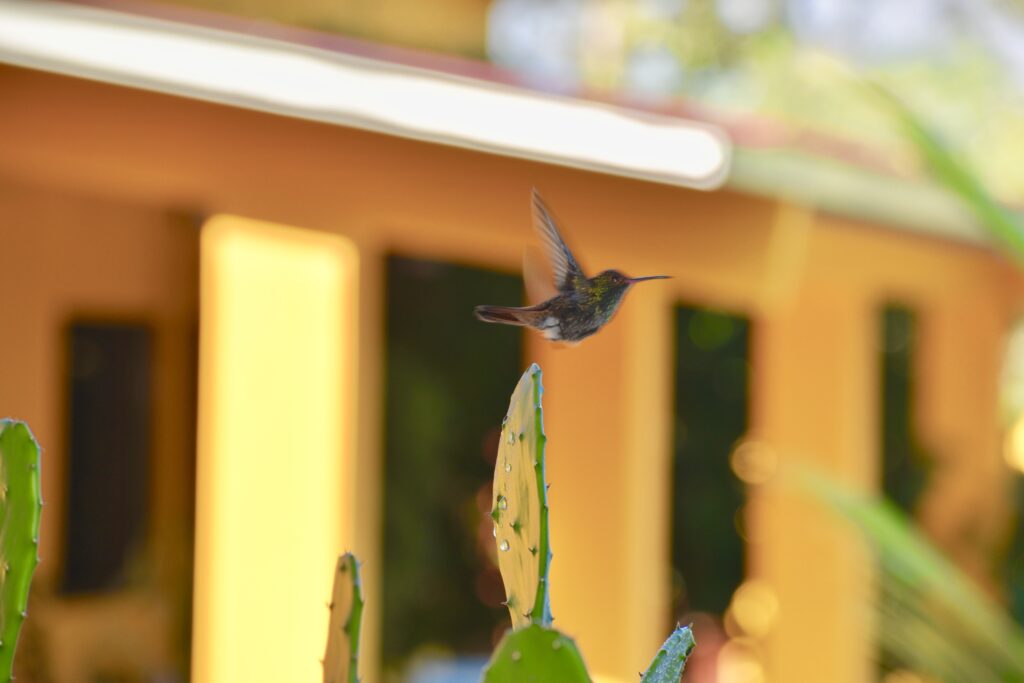
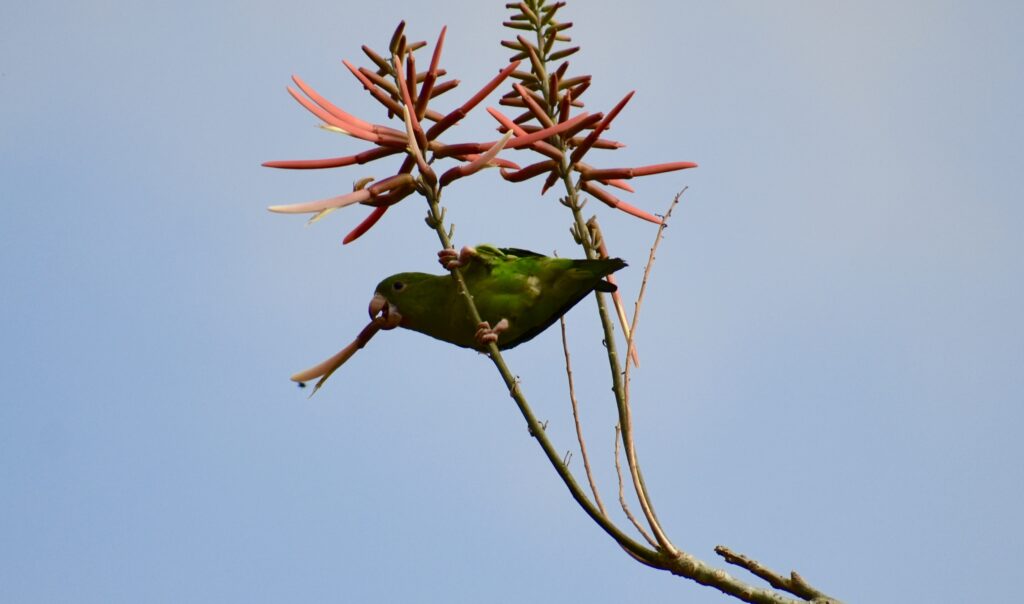
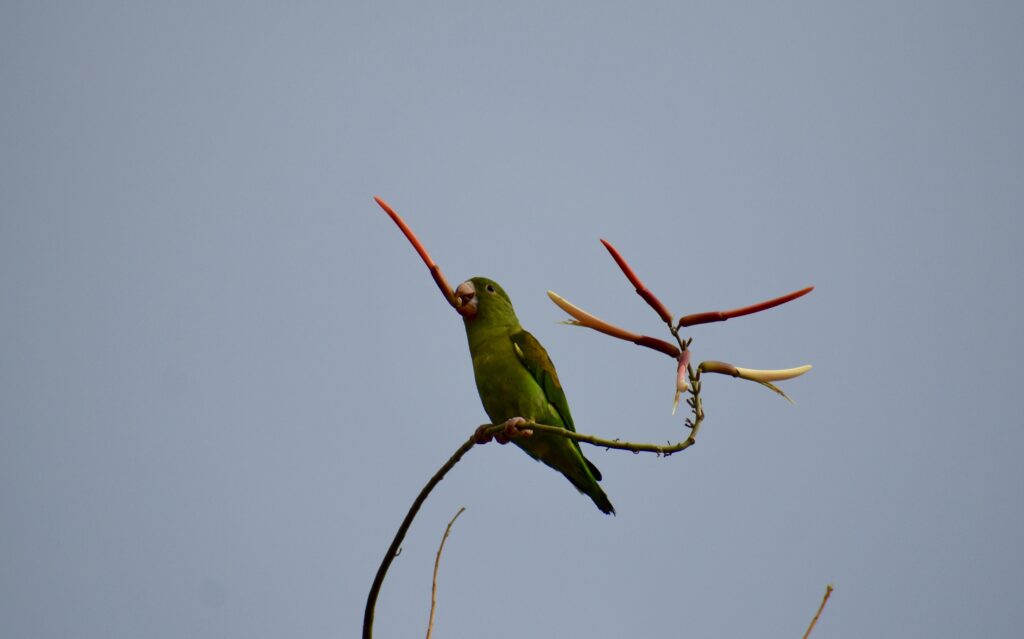
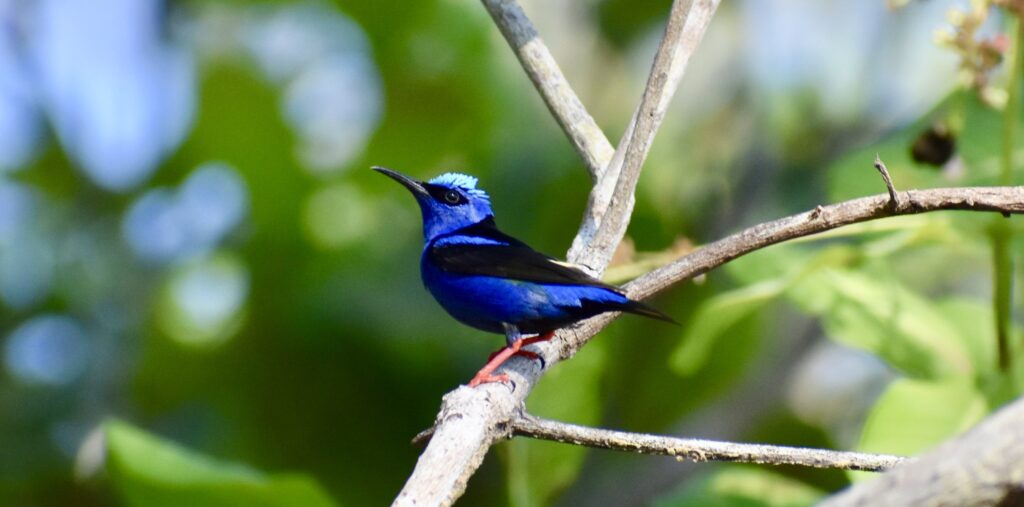
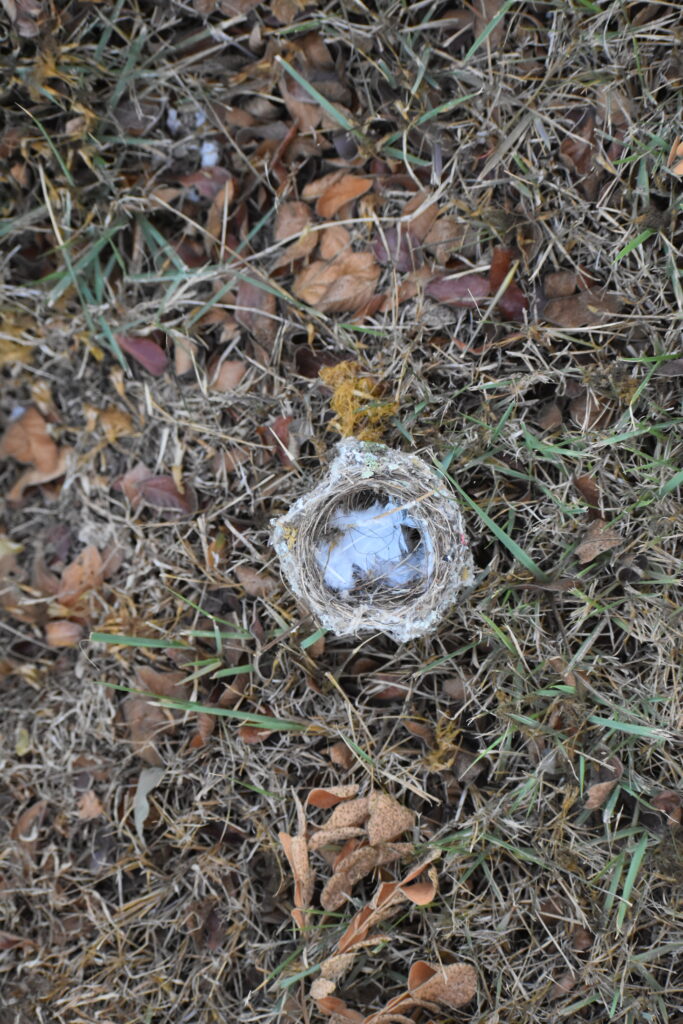

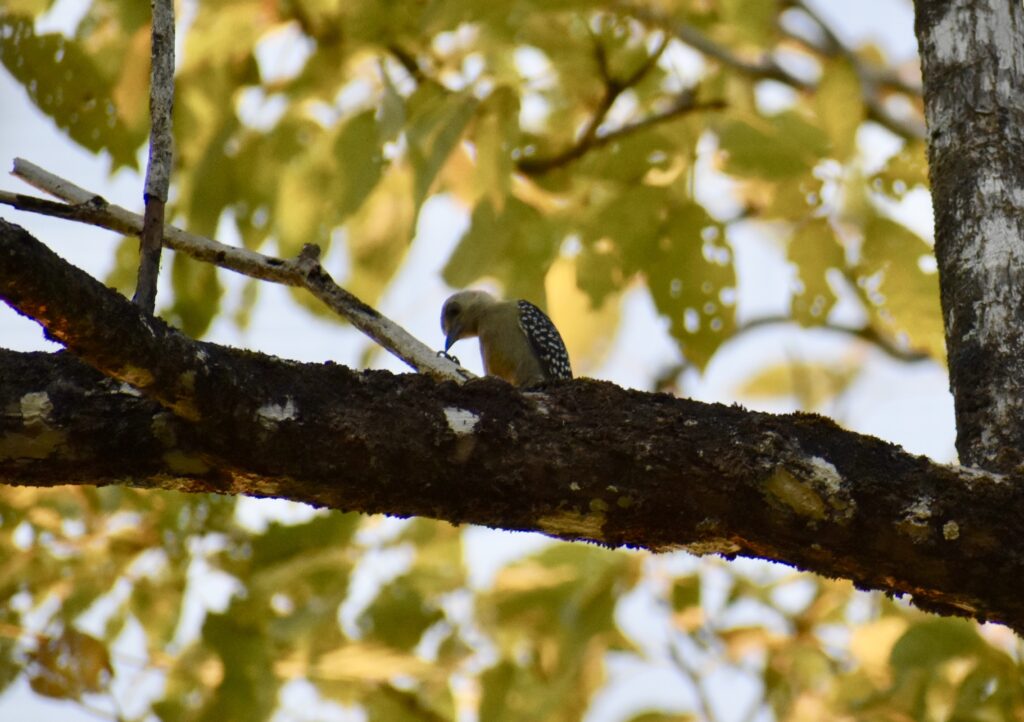

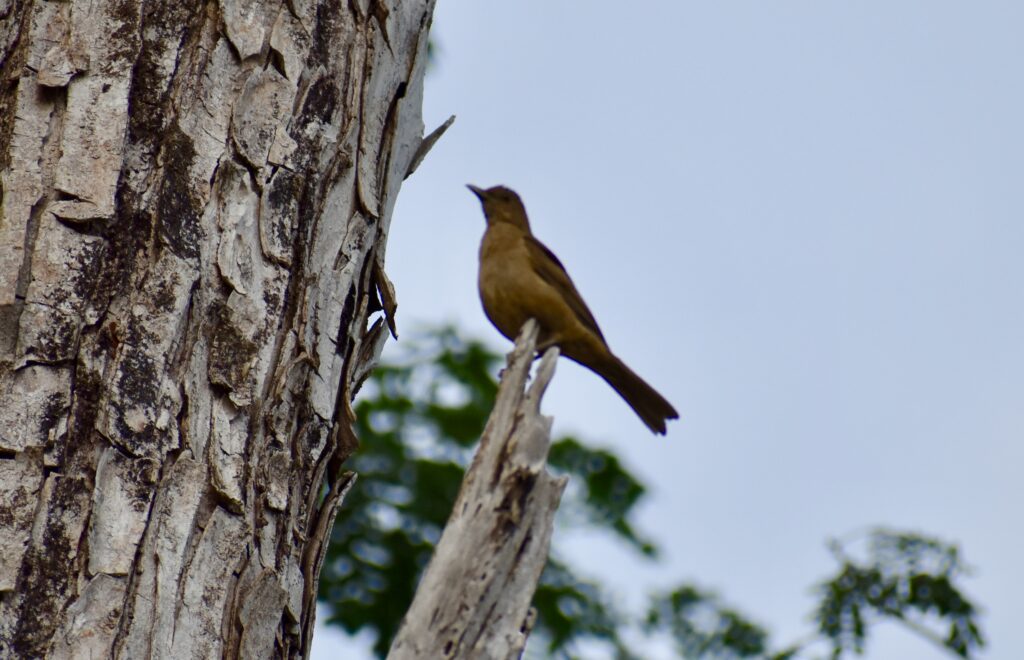
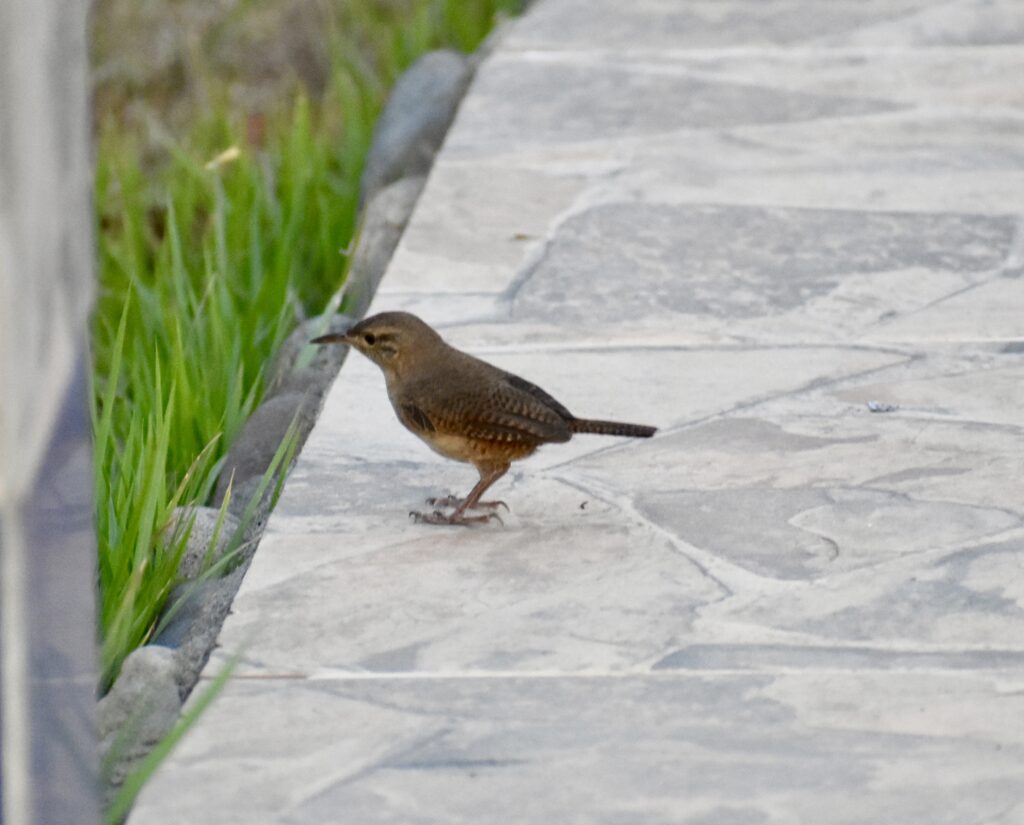
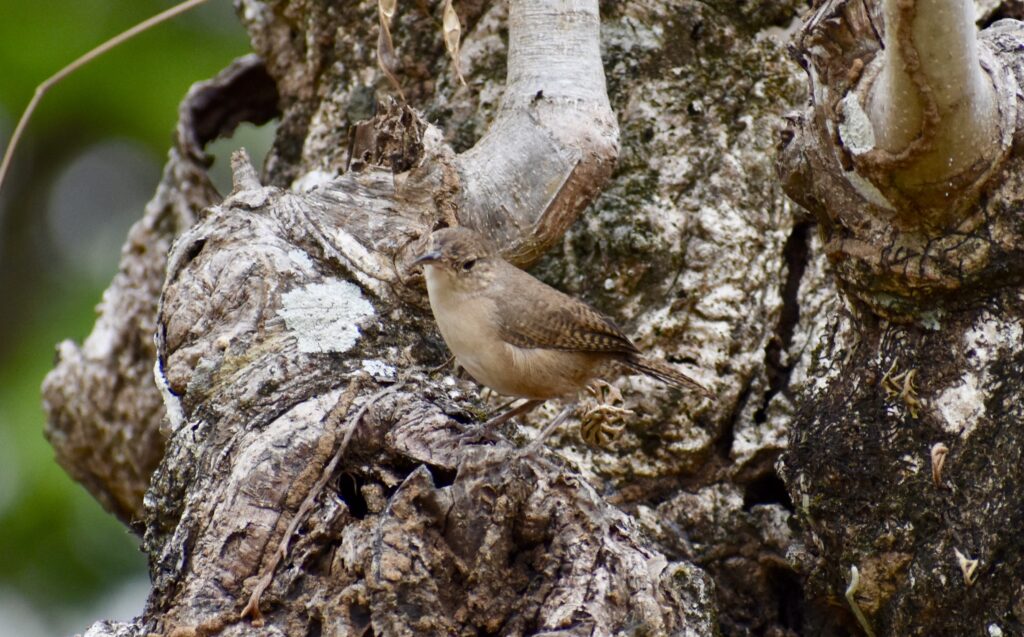
Very interesting and informative. Enjoyed the pictures. Good to have the blog back!